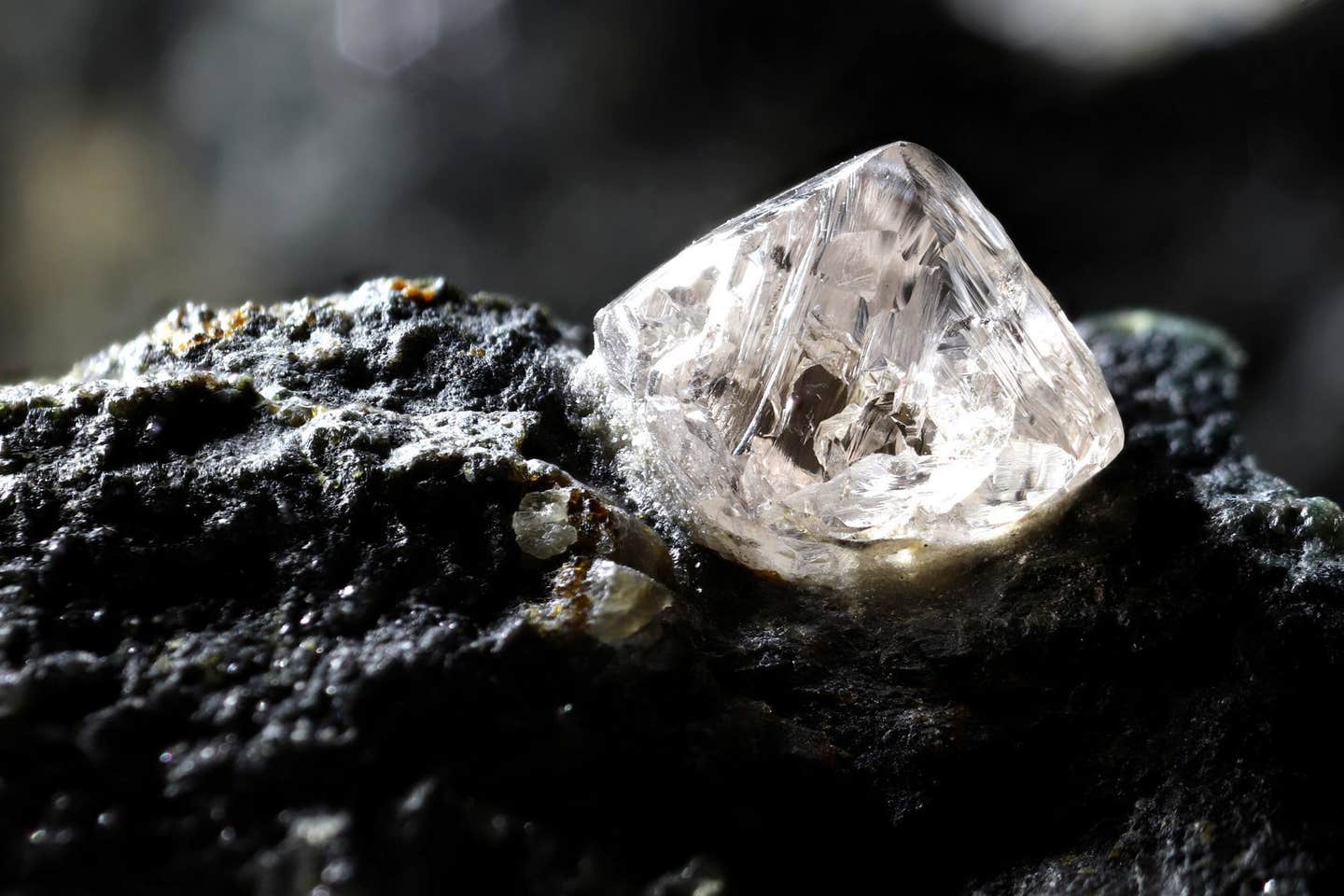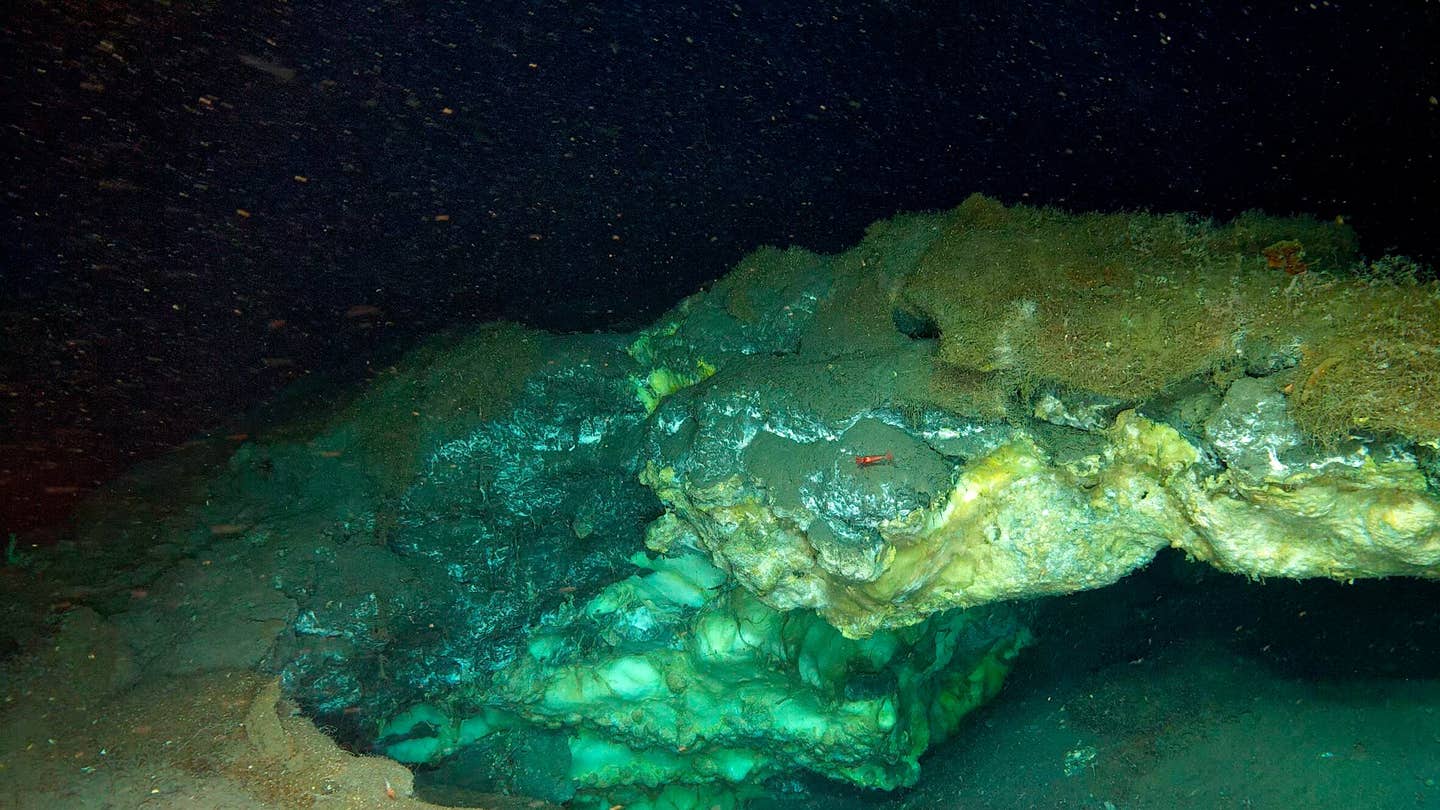Are diamonds still the hardest materials on Earth?
Passed down as heirlooms, diamonds embedded in jewelry resist the regular wear and tear of daily life, making them symbols of endurance.

[Oct. 16, 2023: Staff Writer, The Brighter Side of News]
Natural diamond. Mineral hardness refers to the strength of the bonds between atoms. If the bond is strong, it's harder to separate those atoms when you apply pressure. The weaker those bonds, the easier it is. (CREDIT: Creative Commons)
Diamonds have long been celebrated not just for their sparkling allure, but also for their unparalleled hardness. Often passed down as heirlooms, diamonds embedded in jewelry resist the regular wear and tear of daily life, making them symbols of endurance.
Beyond aesthetics, diamonds are also formidable tools. When shaped into blades or drill bits, they can cut through nearly anything. In powdered form, they offer a fine polish for gemstones, metals, and other materials.
Yet a burning question persists in scientific circles: Is there any material harder than diamond?
The Mohs hardness scale is used to rank the hardness of minerals and gemstones, as well as everyday objects. These 10 minerals are always included in the hardness test. (CREDIT: NATIONAL PARK SERVICE)
"Determining a definitive answer is, interestingly, not as straightforward as one might assume," explains Dr. Richard Kaner, a materials chemist at the University of California, Los Angeles. While diamonds undeniably reign supreme in terms of hardness, researchers have identified ways to engineer diamonds that surpass the hardness of typical gem diamonds. "Moreover," Dr. Kaner adds, "while there might theoretically exist materials harder than diamonds, they currently aren’t available in a tangible, usable form."
To the layperson, the concept of hardness might seem intuitive. But as Dr. Paul Asimow, a geochemist at Caltech, points out, "In scientific terms, hardness possesses a very specific definition." It's a quality distinct from related attributes like stiffness or strength, though these properties can sometimes be intertwined.
Asimow elucidates, "Diamonds, for instance, are incredibly hard, but they're only moderately stiff." Their crystalline structure makes them vulnerable to shattering along specific planes. This property, while a weakness in some contexts, is precisely what allows gem cutters to craft the multifaceted diamonds that dazzle so brilliantly.
Related Stories
In the quest to quantify hardness, scientists have developed several metrics. Geologists, for example, employ the Mohs hardness scale. By assessing whether specific minerals can scratch each other, they rank materials from the softest (talc at 1) to the hardest (diamond at 10).
In contrast, material scientists in labs opt for the Vickers hardness test. This precise measurement evaluates how much force is needed to indent a material with a sharp point, akin to pushing a pencil into a rubber eraser.
The unmatched hardness of diamonds stems from its molecular architecture. Comprising carbon atoms arranged in a cubic lattice, the short and robust chemical bonds between these atoms lend diamonds their characteristic strength. Surpassing this natural design has largely involved tweaks to this structure or substituting some carbon atoms with alternatives like boron or nitrogen.
Lonsdaleite Diamonds Formed by High Energy Event? Lonsdaleite Diamonds Fulgurites Desert Glass. (CREDIT: Creative Commons)
However, an intriguing substance that has repeatedly cropped up in this conversation is lonsdaleite. Although also composed of carbon atoms, these atoms in lonsdaleite adopt a hexagonal arrangement as opposed to diamond's cubic pattern.
Regarding lonsdaleite, Dr. Asimow remarks, "It's an enigma." Historically found in minuscule amounts, predominantly within meteorites, lonsdaleite's true nature remained ambiguous. Some argued it might simply be an anomaly within the standard diamond structure. However, recent discoveries of slightly larger lonsdaleite crystals within meteorites have bolstered its legitimacy. Furthermore, several lab experiments have claimed to produce lonsdaleite, though these crystals were fleeting.
Researchers used cutting-edge electron microscopy and synchrotron techniques to create maps of lonsdaleite, diamond, and graphite found in the meteorites. (CREDIT: Monash University)
While lonsdaleite's exact potential remains to be fully uncovered, it won’t displace diamonds in popular applications like cutting or polishing any time soon.
Advancements in nanotechnology have also unveiled materials rivalling diamonds. By manipulating the nanoscale structure of diamonds, scientists can create materials even harder than standard diamonds. "Nanotwinned" diamonds, for instance, with grains reflecting each other's patterns, reportedly boast twice the hardness of traditional diamonds.
Yet, as Dr. Asimow underscores, the pursuit of superhard materials isn't about breaking records. The real motivation is utility. "The overarching goal for materials scientists is inventing superhard substances that are scalable," he says. Often, the criterion isn't merely surpassing diamond's hardness, but achieving a balance between hardness and cost-effectiveness or ease of production.
A testament to this philosophy is Dr. Kaner's lab, which has engineered a range of superhard metals potentially substituting diamond in industrial contexts. One notable invention now available commercially merges tungsten and boron, augmented with a smattering of other metals.
Remarkably, this composite can scratch a diamond when oriented correctly. Dr. Kaner shares, "Besides its impressive hardness, its production is more cost-efficient as it bypasses the high-pressure conditions essential for lab-made diamonds."
While diamonds in their myriad forms undoubtedly dominate the hardness hierarchy, they may soon encounter rivals. As science relentlessly marches forward, the traditional king of hardness, the diamond, may soon find its throne under siege.
Note: Materials provided above by The Brighter Side of News. Content may be edited for style and length.
Like these kind of feel good stories? Get the Brighter Side of News' newsletter.



